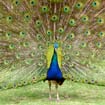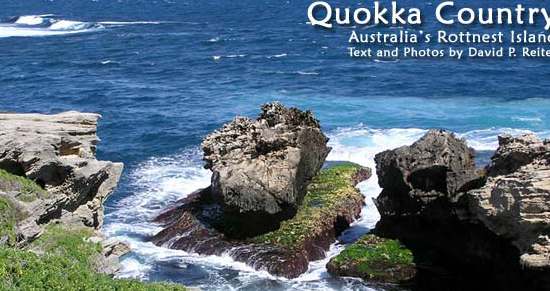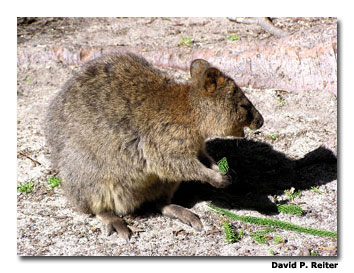

It was all a mistake, really.
In 1696, understandably sunburnt after months at sea in the Indian Ocean, and before charting the west coast of the southern land later to be known as Australia, the Dutch explorers who discovered Rottnest Island found it overrun by large rat-like creatures, so they called the place “rott enest” (rat’s nest). Little did they know that the island already had an aboriginal name: Wadjemup (the place across the water).
The oversized rats were really marsupials — quokkas — and, roaming across the island at large, including the more populated areas, they are one of the island’s peak attractions.
Our kids, Siobhan (eight years) and Alexander (five), could hardly wait to track them down as soon as we landed at the jetty after the smooth, 30-minute ferry trip from Fremantle, Australia. And my wife Cherie, once she’d had her caffeine fix, was prepared to join the pursuit of quokkas.
Quokkas are actually more the size of a domestic cat, and their numbers on Rottnest can vary considerably, depending on the availability of food, but they average about 10,000, far outnumbering the local human population.
They forage on the leaves and bark of small trees and bushes, and will also eat grass and other succulent plants.
We were on a weekend stopover, which we hoped would be a relief from the January heat on the mainland. Our Fremantle hosts suggested it as an essential part of our three-week tour of the west coast, and since we’re from Brisbane — about as far east as you can be from here, we took the advice.
We grabbed a few muffins and drinks from the café at the Visitor and Information Centre in Thomson Bay, better known as The Settlement, and just made it to the Bayseeker Bus stop in time for the next bus. The bus allows passengers to hop on and off at will at any of 16 stops, and you can spend time at a particular stop until the next bus rolls up on the half hour, or walk to meet it at the next stop.
Rottnest Island Tours offers a more formal two-hour coach tour for a family price of AUD $52.80 (USD $39). No cars are allowed on the island, so all transportation is by bus or bicycle.
The island is only seven miles long (11 km) and three miles (4.5 km) at its widest, but the terrain can be a bit rugged, especially if you have kids in tow, so we decided to stop first at Watson’s Glade. Via a smooth limestone track, we walked through a mixed forest of tea trees and wattle trees. The trail led us to spectacular ocean views at the southernmost point on the island, Parker Point, where rugged limestone outcrops are hammered by surf.
Bird watchers will see red-capped robins and golden whistlers here. This area, as well as nearby Little Salmon Bay and Salmon Point, features some of the best snorkeling on the island.
In the waters here, snorkelers can spot tropical fish such as the West Australian dhufish, baldchin groper, harlequin fish, cobbler, flathead, leatherjacket, Samson fish, tailor, butterfly fish, moon wrasse and Eastern blue devil.
It was mid-day by the time we reached the de Vlamingh Monument (named after one of the Dutch explorers) at Narrow Neck, which is as far as you can go on the Bayseeker, and where the free narrative ends. (The Rottnest Island coach tour goes all the way to West End, which is, as the name suggests, at the western tip of the island.)
In what proved to be my most daring gamble of the day, I decided that we would do the three-mile (5.4 km) trip from the monument to West End on foot.
The trees quickly thinned out to dry grasses and heath, and the kids were a bit out of breath by the time we made it over the rolling, sandy hills to the cape. If there were any quokkas along the way, we missed them. (They tend to seek shelter from the heat of the day.) But the view at the trail’s end was worth it, as the land slopes down to meet the open sea.
We scrambled down to watch the surf crashing against well-worn rocks, then settled in for a scenic picnic. It was well worth the stop — even if I had to carry Alexander on my shoulders for the last kilometer while returning to our last bus stop.

Back at the monument, we hopped on a Bayseeker to travel along the north side of the island to Geordie Bay, which is more than half-way back to Thomson Bay. Geordie Bay is the closest thing to suburbia on the island, where the locals, as well as vacationers from the mainland, have built modern homes overlooking the open ocean. It’s also prime quokka country.
Visitors can have an ice cream or caffeine recharge at the kiosk here and, while it’s against park regulations to feed quokkas, lots of quokkas were waiting here, apparently conditioned to appear for treats. Siobhan and Alexander delighted in seeing how close they could get to the nearly tame creatures, which were quite happy to pose for our camera before slowly hopping on their way.
That evening, as we walked from our hotel to town, there were few streetlights, and the mainland was far enough away to ensure that the stars provided the only light show. The sound of the surf breaking, the scent of the salty air and the call of the night birds filled our senses.
In addition to sightseeing and snorkeling, Rottnest’s lures include tours of the Wadjemup Lighthouse, as well as scuba diving and fishing.
The island has several historical walks, including the Vincent Way Historical Trail, which starts at the seawall near the ferry jetty, then leads past some of the oldest examples of colonial buildings in Australia, including the Rottnest Museum, the old salt store (now an art gallery) and the General Store — the best place to find souvenirs.
The Rottnest Museum, which was built by Aboriginal prisoners in 1857 as a store and mill, has a wealth of displays and photographs on the history of the island.
There are also walks along Cape Vlamingh to an old shipwreck, at Oliver Hill Gun Battery, and along the Bickley Battery Heritage Trail at Kingston Barracks, a short drive inland from Thomson. This trail shows evidence of the island’s history as an internment camp and as a key site for defending Perth during World War II.
But for Siobhan and Alexander, the highlight was more contemporary. After they’d had their fill of tracking quokkas at Geordie Bay, they discovered the tribe of peacocks that ambles through the picnic grounds off the jetty. What better way to pass the last hour on Wadjemup, ice cream cone in hand?
If You Go
Your first stop should be the Visitor and Information Centre at Thomson Bay, which sells tickets for everything that costs anything on Rottnest. There’s a modest charge for a day pass on the Bayseeker Bus. Families with older kids can opt to rent bikes for the day.
You can find places to stay on Rottnest to suit any budget. The luxury Rottnest Hotel offers a choice of restaurants and bars, while the 3½-star Rottnest Lodge Resort, which was a boy’s reformatory up to 1901, has a mix of budget and luxury rooms and apartments, ranging from AUD $78 – $200.
A short walk east of Thomson Bay are squadrons of villas, cabins and bungalows suited to families, some with all the modern conveniences, others offering accommodation for as little as AUD $70 a day for a week — but with outdoor toilets.
If you rent an accommodation here, be forewarned, the numbering system defies logic, so get clear directions on where your accommodation is. And you’re expected to bring your own linens. If you arrive linen-less, you can buy some at the General Store in town. Many visitors bring supplies over from the mainland, which makes for an inexpensive holiday.
Geordie Bay, Kingston Barracks and Fays Bay also offer accommodations.
Thomson Bay has several eating and drinking places, with the Dome Café serving very passable coffee and cakes for morning and afternoon snacks. The Quokka Arms Pub offers liquid refreshments. The al fresco dining areas of the Rottnest Hotel have been renovated, to much controversy among locals, who see the pink stucco Mediterranean style as being inconsistent with Rottnest’s earthy wood-and-plaster architecture.
- What It’s Like to Live as an Expat: Lake Chapala, Mexico - April 18, 2024
- Top 5 Spots for Stargazing in North Carolina - April 17, 2024
- The Low-Key Magic of Ghent, Belgium - April 17, 2024
